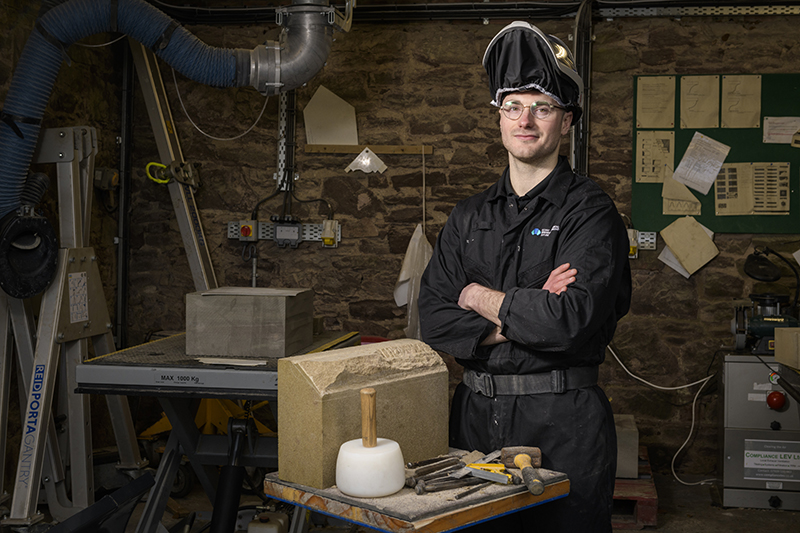World
Perfecting the craft: stonemason continues 750-year tradition in Scotland | Project Scotland

STONEMASON Luke Maher is carrying out a centuries-old tradition of craftsmanship and preservation in the heart of Scotland. His work, rooted in history and skill, takes him from ancient castles to fascinating cathedrals, each site a testament to Scotland’s rich heritage.
luke’s journey began at Historic Environment Scotland (HES) in 2017. Since then, he’s lent his expertise to a number of key projects and worked with some of Scotland’s most famous structures and symbols, including the Stone of Destiny. Now in his mid-20s, he finds himself working on Dunkeld Cathedral, as part of HES’s initiative to study climate change’s impact on historic structures.
Although passionate about stonemasonry, the route to his current position was somewhat unconventional. Leaving school at 16, he ventured into landscaping and grounds maintenance before pursuing a new challenge.
Luke said, “I was doing seasonal work with Stirling Council, but I was looking for a permanent position. While looking for jobs, I saw the apprenticeship advertised on the HES website and it seemed like a great organisation to work for with lots of opportunities and a varied schedule of work.”
HES offers a range of training opportunities from modern to traditional apprenticeships. Luke embarked on a four-year apprenticeship in stonemasonry. From the ancient Antoine Wall to the grandeur of Doune Castle, he honed his craft under the guidance of seasoned professionals.
Luke found success at the national SkillBuild Competition, where he won the gold medal in the stonemasonry division.
As he continues his craft on the weathered façade of Dunkeld Cathedral, Luke sees not just stones, but a legacy of resilience and craftsmanship that he hopes will continue for centuries to come.
He added, “The construction of Dunkeld Cathedral took about 250 years – from the mid-1200s to the late 1400s – and it’s amazing that I get to continue that work today. The high-level inspections of Dunkeld Cathedral assess the impact of climate change in combination with other factors which allows us to make informed decisions on conservation works.”
Beyond the physical labour, his work holds a deeper significance – it serves as a connection to Scotland’s rich architectural past, as well as its future. My role is diverse, satisfying, and necessary. It has been a life changing experience which has taken me to some of the most beautiful properties in Scotland and given me skills in stonemasonry that I can take all over the world.”






